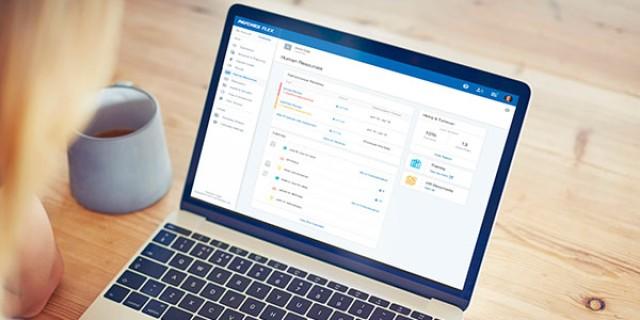- Beneficios para empleados
- Artículo
- Lectura de 6 minutos
- Last Updated: 12/23/2024
Illinois Secure Choice Retirement Savings Program Is for Businesses With 5+ Employees

Table of Contents
Many Americans find themselves financially unprepared for their non-working retirement years. In response, states such as Illinois have established their own retirement plans.
What Is Secure Choice?
Secure Choice is a Roth individual retirement account (IRA) intended to help the 1.2 million workers in the Prairie State who lack access to employer-sponsored retirement plans.
Employer Requirements Under Illinois Secure Choice
Employers must register to participate in the program after meeting employer requirements:
- Employ 5 or more eligible employees in every quarter of the previous year
- Operate in Illinois for at least two years
- Do not currently offer workers a qualified* retirement savings plan
*A qualified retirement plan includes a 401(a), 401(k), 403(a), 403(b), 408(k), 408(p), or 457(b).
Employers will not be able to make contributions to the plan nor will they incur any costs related to it, plus they have other responsibilities such as:
- Automatically enroll eligible employees
- Distributing information about the program to all employees
- Facilitating enrollment and setting up the payroll deduction mechanism
An employer that does not want to participate in Secure Choice can elect to offer its workers another qualified retirement savings plan that satisfies the mandate.
How Does Illinois Secure Choice Work?
Employers are required to automatically withhold five (5) percent of an employee's compensation (up to the annual maximum allowed for IRA contributions each year as provided by the IRS) and then remit the contributions to the Secure Choice Retirement Savings program.
However, employees have 30 days to opt out of the program or, should they participate, 30 days to elect a deferral percentage other than 5%. The employer has the option to re-enroll employees.
There is an annual auto-escalation of 1% on the contribution rate, up to a maximum of 10%.
What are the Penalties for Noncompliance?
Businesses that fail to enroll in Illinois Secure Choice or that don’t offer a plan from a private provider could face a penalty of $250 per employee for the first year, escalating to $500 per employee for each subsequent year.
What Are Other Retirement Savings Options for Illinois Businesses?
Registering for the Illinois Secure Choice program is only one way to fulfill the requirement that every qualified employee in Illinois have access to a retirement plan. As a compliant alternative, businesses can also establish their own employee retirement plan, such as a 401(k) or SIMPLE IRA, to satisfy this requirement. You should consider all available options before making a decision.
What are the Differences Among State-Run IRAs, SIMPLE IRAs and 401(k) plans?
A state-run sponsored IRA is one way to satisfy requirements and help employees save for retirement. However, it has some limitations and may not be the best fit for your business, your employees, and your own retirement needs as a business owner
The chart below shows the characteristics of a state-run IRA compared to a SIMPLE IRA and 401(k) plan, both of which Paychex offers. The biggest differences are the amount of administration required, the option for employer matching, the maximum amount employees can contribute, and the potential for tax credits.
| 2025 | State IRA | SIMPLE IRA (Offered by Paychex) | 401(k) or PEP (Offered by Paychex) |
| Contribution Max | $7,000 | $16,500 | $23,500 |
| Company Match Option | No | Yes, mandatory | Yes, at employer’s discretion |
| Tax Credits for Opening New Plan | No | Up to $16,500 for the first 3 years1 | Up to $16,500 for the first 3 years1 |
| Contribution Credit | No | Up to $1,000 per employee2 | Up to $1,000 per employee2 |
| Employer Tasks | The employer processes payroll contributions, updates contribution rates, adds newly eligible employees, etc. | Paychex is the recordkeeper | Paychex is the recordkeeper |
1Setting Every Community Up for Retirement Act of 2019. New plans may be eligible for up to $5,000 a year over three years and an auto-enrollment credit of $500 a year over three years.
2Under SECURE Act 2.0, credit is limited to employers with 50 or fewer employees and reduced for employers with 51 to 100 employees. The credit is generally a percentage of the amount contributed by the employer.
Looking Forward
To help your business stay apprised of retirement program updates, refer to our state retirement plan information guide to help you navigate the law. When you’re ready to take action, Paychex is here to help Illinois businesses like yours select and manage a retirement plan that meets state requirements as well as make it easier to manage your employee benefits, HR administration, and payroll processing.
Tags







